
Dish, attributed to the William Dennis pottery, New Salem, North Carolina, 1790–1832. Lead-glazed earthenware. D. 13 3/8". (Courtesy, The Barnes Foundation; unless otherwise noted, photos by Gavin Ashworth.) Antique dealer Joe Kindig Jr. of York, Pennsylvania, purchased this dish prior to April 1935, when he advertised it along with other southern earthenware in The Magazine Antiques 27, no. 4 (April 1935): 121.

Map showing the location of the William Dennis and Thomas Dennis pottery sites. (Artwork, Wynne Patterson.)

Indenture of George Newby, Randolph County, North Carolina, May 3, 1813. (Courtesy of the North Carolina Office of Archives and History, Raleigh, North Carolina.)

Mendenhall and Dicks family tree. (Compiled by Hal Pugh and Eleanor Minnock-Pugh; artwork, Wynne Patterson.) John Mendenhall married Elizabeth Maris (b. 1665) in 1685; in 1708 he married Esther Maddock Dicks, the widow of Peter Dicks.
n Documented potter
n Undocumented potter claimed through family tradition
n Documented maker of clay smoking pipes

Dennis and Webb family tree. (Compiled by Hal Pugh and Eleanor Minnock-Pugh; artwork, Wynne Patterson.)
n Documented potter
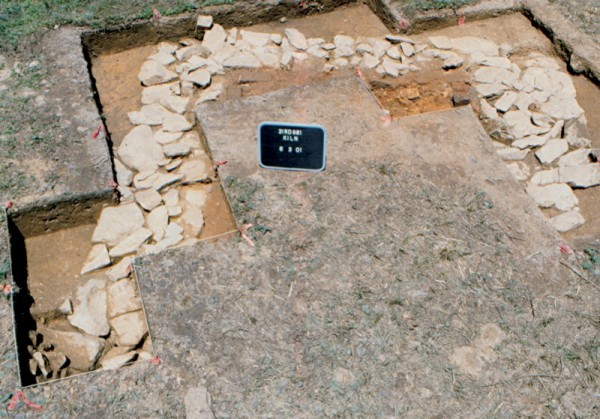
View of the William Dennis kiln after partial excavation, Randolph County, North Carolina, 2001. (Photo, Linda F. Carnes-McNaughton.) The kiln measures 10' by 10' and had 2'-thick rock walls.
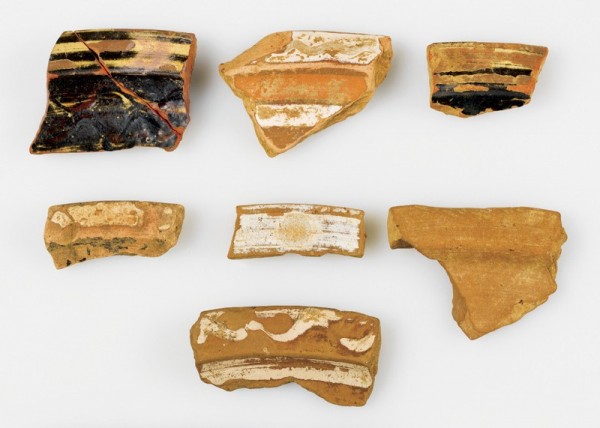
Dish rim fragments recovered at the William Dennis pottery site, New Salem, North Carolina, 1790–1832. Lead-glazed and bisque-fired earthenware. (Private collection.) The extrapolated diameters of these dishes are 11 3/4"–12".
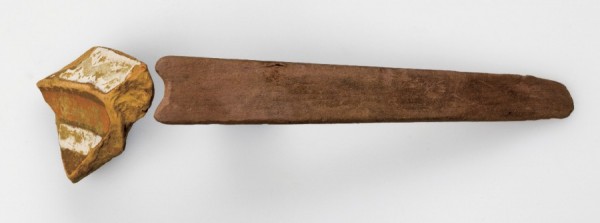
Notched wooden tool with a rim fragment recovered at the William Dennis pottery site, New Salem, North Carolina, 1790–1832. (Private collection.)

Dish rim fragments recovered at the William Dennis pottery site, New Salem, North Carolina, 1790–1832. Bisque-fired earthenware. (Private collection.) The impression left in the clay by the potter’s notched wooden tool is clearly visible on the edges of these rims, particularly the one at the upper left.
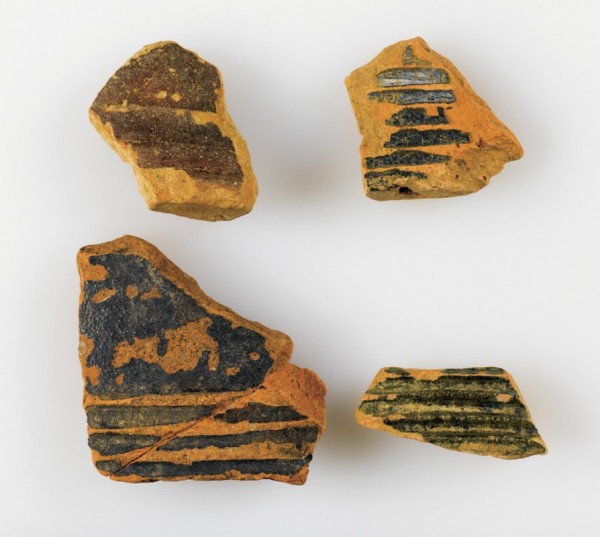
Mug fragments recovered at the William Dennis pottery site, New Salem, North Carolina, 1790–1832. Lead-glazed earthenware. (Private collection.) The concentric tooling on these mugs appears to have been generated with a multitoothed rib.

Mugs, Staffordshire, England, 1700–1720. Lead-glazed earthenware. (Courtesy, James Glenn Collection.)

Dish rim fragments recovered at the William Dennis pottery site, New Salem, North Carolina, 1790–1832. Bisque-fired earthenware. (Private collection.) The extrapolated diameters of these dishes are, from top to bottom, 11 3/4", 12", and 13".

Reproduction dish, based on fragments from the William Dennis pottery. D. 12". Lead-glazed earthenware. (Private collection.)

Dish fragments recovered at the William Dennis pottery site, New Salem, North Carolina, 1790–1832. Bisque-fired earthenware. (Private collection.) The reproduction dish illustrated in fig. 13 was based on these and other related fragments.
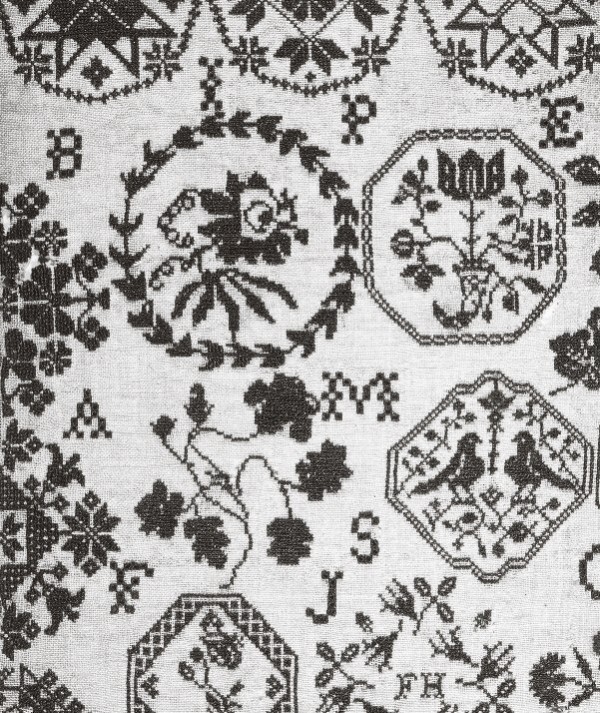
Detail of the upper left corner of a sampler by Ann Grimshaw, Ackworth School, Yorkshire, England, 1818. (Courtesy, Philadelphia Museum of Art.)

Dish, attributed to the William Dennis pottery, New Salem, North Carolina, 1790–1832. Lead-glazed earthenware. D. 13". (Courtesy, Old Salem Museums & Gardens.) The decoration in the cavetto of this dish is closely related to that on the fragments illustrated in fig. 14.
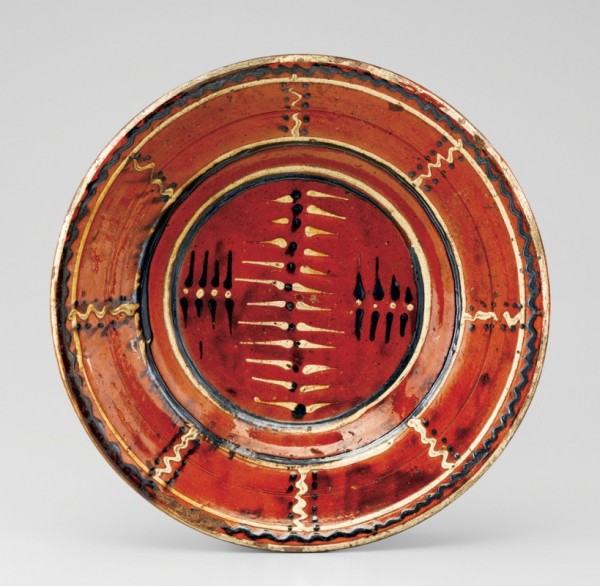
Dish, attributed to the William Dennis pottery, New Salem, North Carolina, 1790–1832. Lead-glazed earthenware. D. 13 1/4". (Courtesy, The Barnes Foundation.)

Dish fragments recovered at the William Dennis pottery site, New Salem, North Carolina, 1790–1832. Bisque-fired earthenware. (Private collection.) All of these fragments have petal-shaped motifs with contrasting slip outlines and jeweling.

Dish, attributed to the William Dennis pottery, New Salem, North Carolina, 1812. Lead-glazed earthenware. D. 13 1/8". (Courtesy, Old Salem Museums & Gardens.)

Detail of the dish illustrated in fig. 19, with a cavetto fragment recovered at the William Dennis pottery site. The background engobe and slip decoration on the fragment would have matched those on the fired dish. The beige jeweling and concentric banding on the fragment would have burned green during the glaze firing.

Dish, attributed to the William Dennis pottery, New Salem, North Carolina, 1790–1832. Lead-glazed earthenware. D. 13 7/8". (Private collection.)
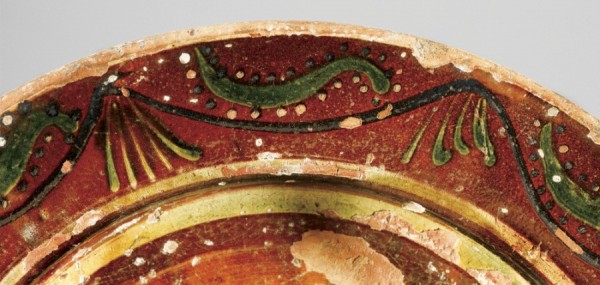
Detail of the marly of the dish illustrated in fig. 21.
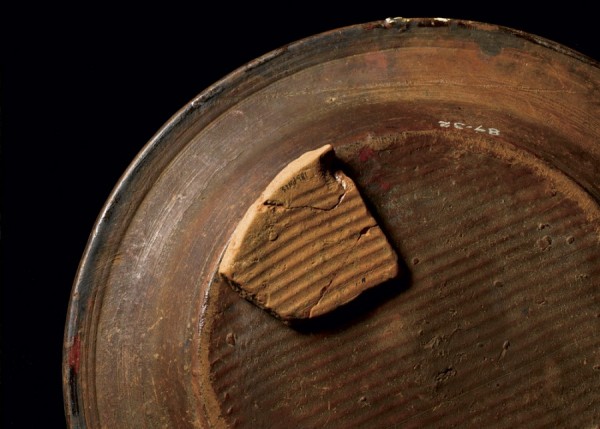
Detail of the underside of the dish illustrated in fig. 19 with a fragment from the William Dennis pottery site, New Salem, North Carolina, 1790–1832.
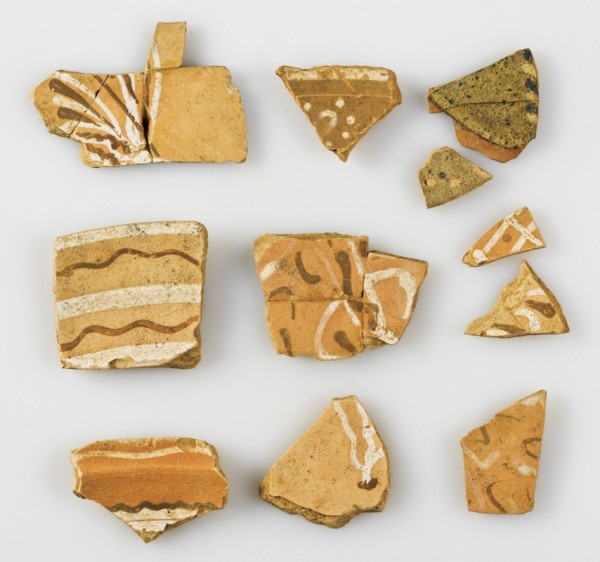
Dish fragments recovered at the William Dennis pottery site, New Salem, North Carolina, 1790–1832. Bisque-fired and lead-glazed earthenware. (Private collection.) The extrapolated diameter of the middle dish fragment on the left is 11 3/4"; the extrapolated diameter of the dish fragment at the lower left is 10 1/2".

Dish fragments recovered at the William Dennis pottery site, New Salem, North Carolina, 1790–1832. Bisque-fired earthenware. (Private collection.)
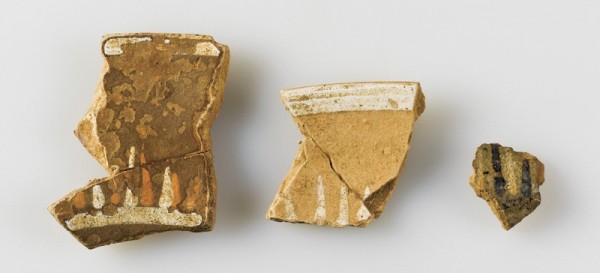
Dish fragments recovered at the William Dennis pottery site, New Salem, North Carolina, 1790–1832. Bisque-fired and lead-glazed earthenware. (Private collection.) The repetitive trailed slip device creates a flame or sunburst pattern.
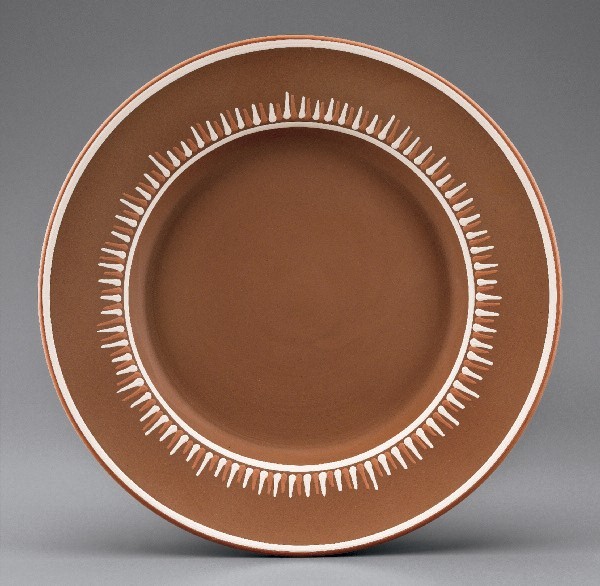
Reproduction dish, based on fragments recovered at the William Dennis pottery site. Bisque-fired earthenware. D. 12 1/8". (Private collection.)

Detail of the dish illustrated in fig. 27, with a marly fragment recovered at the William Dennis pottery site, New Salem, North Carolina, 1790–1832. The Dennis potters made engobes ranging from brown to purple-black by grinding iron/manganese nodules with scale produced during the forging of iron.

Dish, attributed to the William Dennis pottery, New Salem, North Carolina, 1790–1832. Lead-glazed earthenware. D. 13 1/4". (Private collection.) Bearing the initials “AH,” this dish reputedly belonged to Quaker Abraham Hammer.
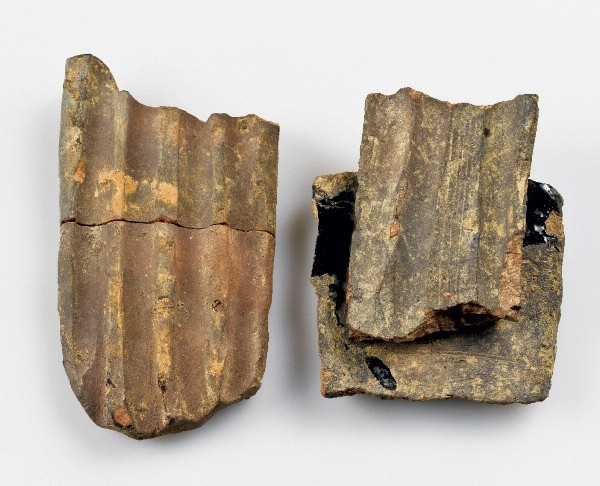
Kiln tiles recovered at the Thomas Dennis pottery site, New Salem, North Carolina, 1812–1821. High-fired clay. (Private collection.) The tiles on the right are fused together with glaze.
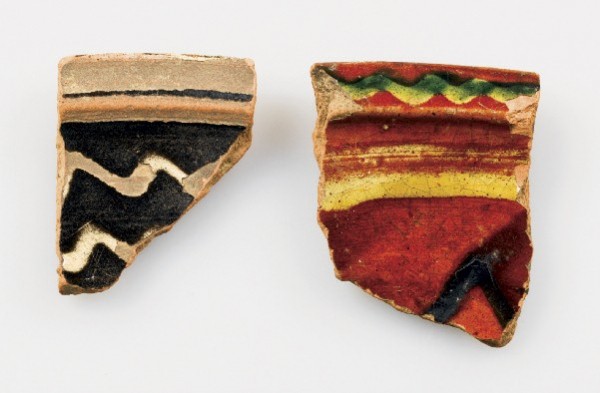
Dish fragments recovered at the William Dennis pottery site, New Salem, North Carolina, 1790–1832 (left) and the Thomas Dennis pottery site (right). Lead-glazed earthenware. (Private collection.) The form and profile of these pieces are very similar.

Dish fragment recovered at the Thomas Dennis pottery site, New Salem, North Carolina, 1812–1821. Lead-glazed earthenware. (Private collection.) The extrapolated diameter is 11 1/2".
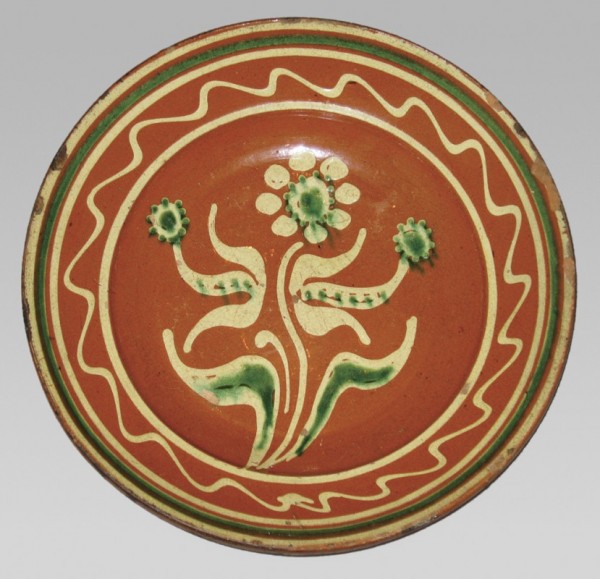
Dish, attributed to the Dennis potteries, New Salem, North Carolina, 1790–1832. Lead-glazed earthenware. D. 13 1/4". (Courtesy, Winterthur Museum.)
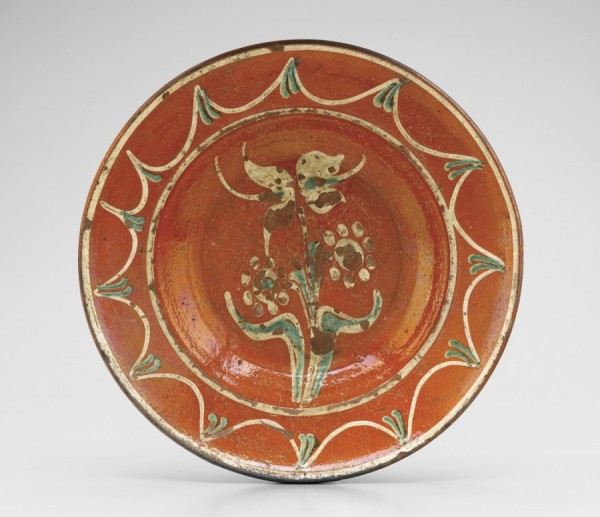
Dish, attributed to the Dennis potteries, New Salem, North Carolina, 1790–1832. Lead-glazed earthenware. D. 13 1/2". (Courtesy, North Carolina Pottery Center.)
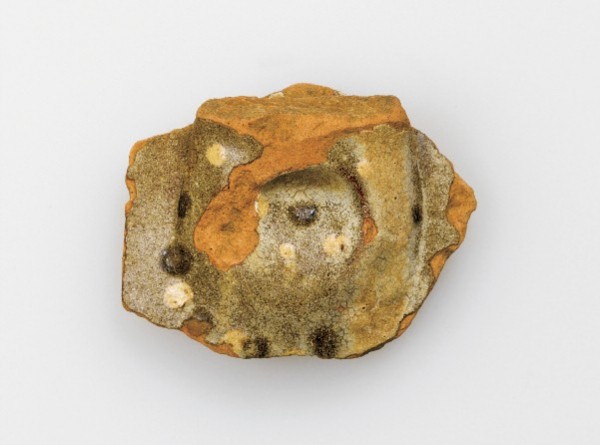
Handle fragment recovered at the William Dennis pottery site, New Salem, North Carolina, 1790–1832. Lead-glazed earthenware. (Private collection.) This fragment is the lower terminal.
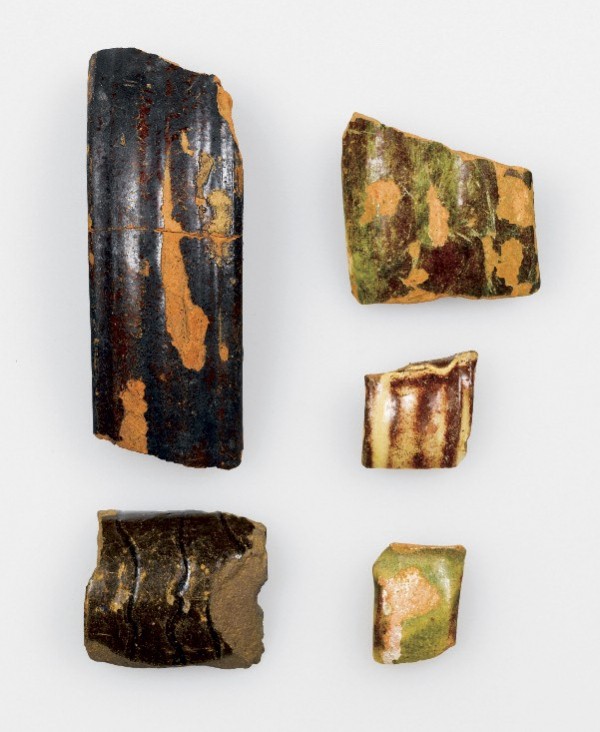
Handle fragments recovered at the William Dennis pottery site, New Salem, North Carolina, 1790–1832. Lead-glazed earthenware. (Private collection.) On the fragments at the upper and lower right, the potter applied the green on a white engobe, which produced a light apple-green color.
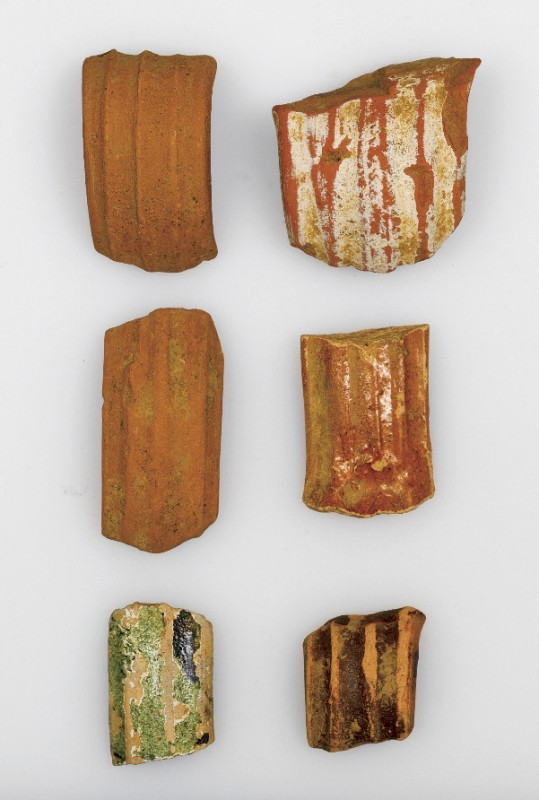
Handle fragments recovered at the William Dennis pottery site, New Salem, North Carolina, 1790–1832. Bisque-fired and lead-glazed earthenware. (Private collection.)

Front and back views of a handle fragment recovered at the William Dennis pottery site, New Salem, North Carolina, 1790–1832. Lead-glazed earthenware. (Private collection.)
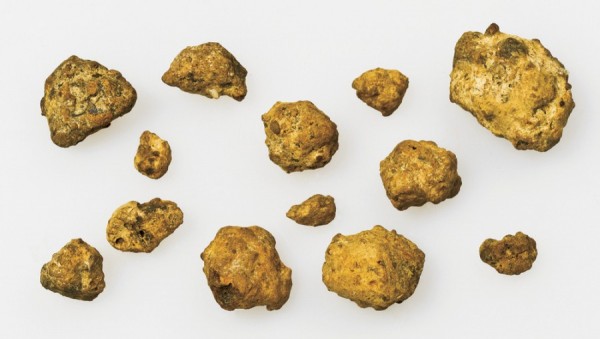
Iron-manganese nodules recovered at the William Dennis pottery site, New Salem, North Carolina, 1790–1832. (Private collection.)
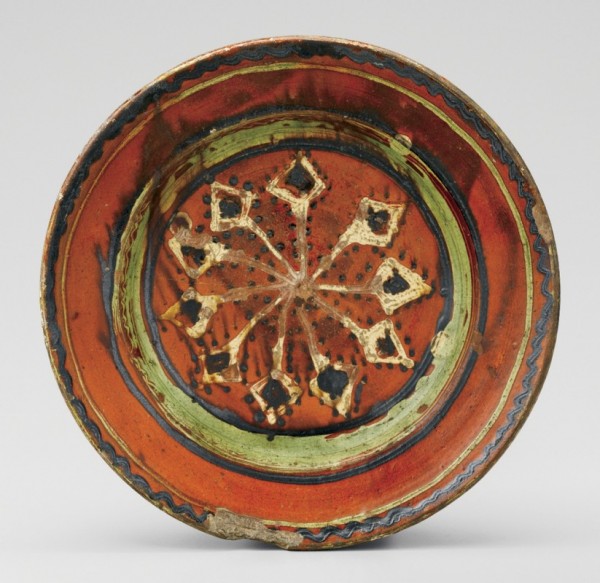
Dish, attributed to the Dennis potteries, New Salem, North Carolina, 1790–1832. Lead-glazed earthenware. D. 10 1/2". (Courtesy, Old Salem Museums & Gardens.)

Hollow-ware fragment recovered at the William Dennis pottery site, New Salem, North Carolina, 1790–1832. Lead-glazed earthenware. (Private collection.) The light apple-green color of this fragment was achieved by applying a green lead glaze over a white engobe.
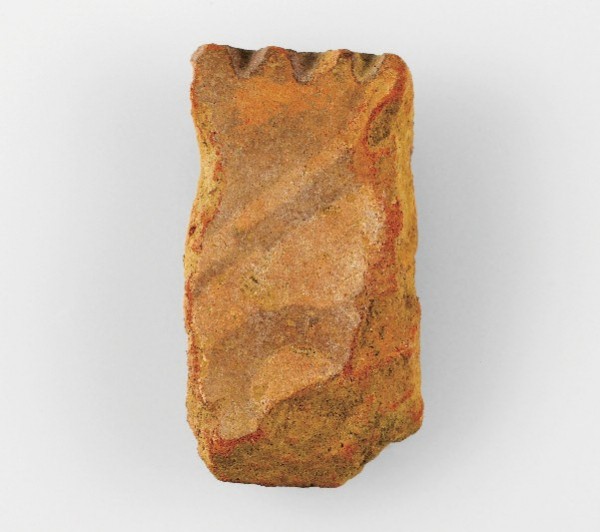
Dish fragment recovered at the William Dennis pottery site, New Salem, North Carolina, 1790–1832. Bisque-fired earthenware. (Private collection.) Marbled in a flattened buff and red slip, the dish from which this fragment came appears to have been drape-molded; it would have been similar in appearance to the example illustrated in fig. 43.

Dish, Philadelphia, Pennsylvania, ca. 1780. Lead-glazed earthenware. D. 7 1/2". (Courtesy, Independence Hall, National Park Service.)

Saggar fragments recovered at the William Dennis pottery site, New Salem, North Carolina, 1790–1832. High-fired clay. (Private collection.)
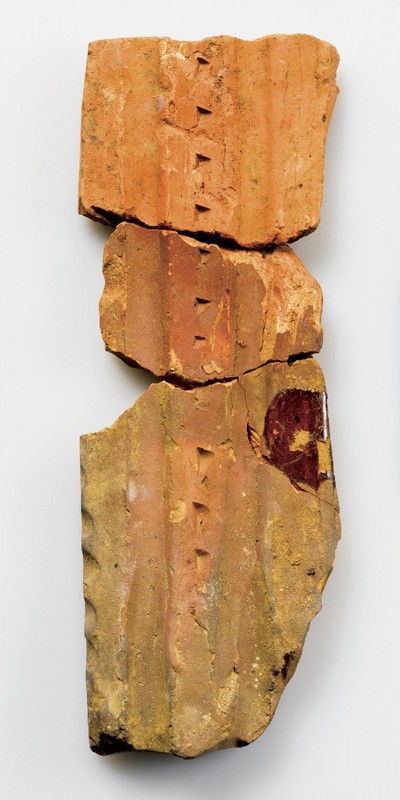
Kiln tile recovered at the William Dennis pottery site, New Salem, North Carolina, 1790–1832. High-fired clay. (Private collection.) This finger-grooved tile is 11 1/2" x 4" and varies in thickness from 1/2" to 1".
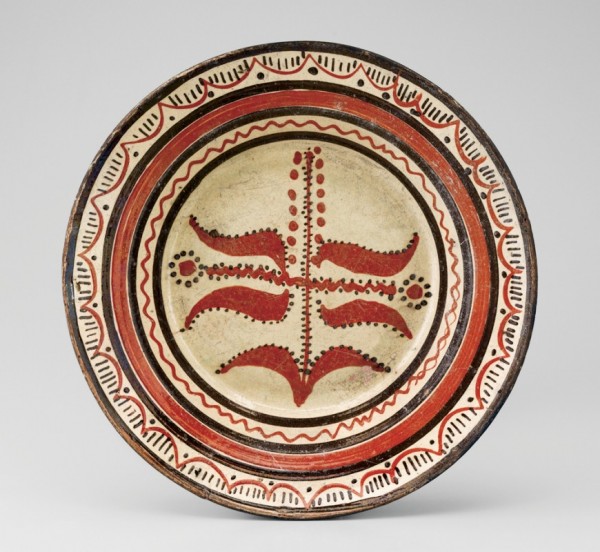
Dish, central piedmont region of North Carolina, 1780–1820. Lead-glazed earthenware. D. 12 7/8". (Courtesy, The Barnes Foundation.) This dish has compositional affinities with the examples illustrated in figs. 1 and 33, but its rear profile differs significantly from those of dishes and fragments associated with the Dennis sites. This compelling object might be part of the larger Quaker slipware tradition that extended beyond the confines of New Salem.
